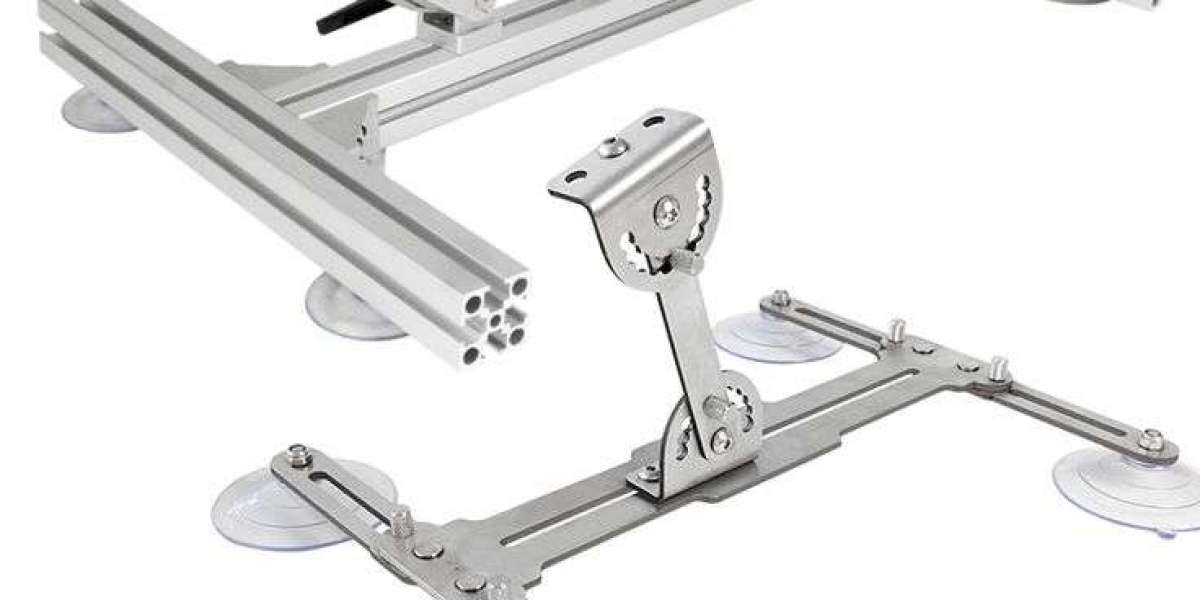Linear Carriages: Core Characteristics
Linear carriages consist of:
A carriage (slider/block) that attaches to the load and houses rolling elements (balls or rollers).
A linear guide rail with ground raceways that define the motion path.
A recirculation system (for rolling elements) to enable continuous motion.
Key Advantages:
✔ High precision and load capacity
✔ Stability and rigidity under load
✔ Low friction and smooth motion
✔ Versatility in multi-axis systems
Comparison with Alternative Components
1. Linear Carriages vs. Ball Screws
Ball screws convert rotary motion to linear motion using a threaded shaft and nut with recirculating balls.
Factor | Linear Carriages | Ball Screws | Advantage |
|---|---|---|---|
Motion Type | Direct linear motion (carriage + rail) | Rotary-to-linear motion (shaft + nut) | Carriages for multi-axis flexibility |
Load Capacity | Up to 200,000N (heavy-duty models) | Up to 100,000N | Carriages (for heavy multi-directional loads) |
Precision | ±0.001 mm (high-precision models) | ±0.0001 mm (exceptional for thrust applications) | Ball screws for ultra-high thrust precision |
Speed | Up to 2 m/s (optimized designs) | Up to 1 m/s | Carriages (faster in multi-axis systems) |
Backlash | Minimal (with preloaded carriages) | Minimal (inherent in design) | Comparable, but carriages handle side loads better |
Best For | Multi-axis systems, heavy loads | High-thrust tasks (e.g., presses) | Depends on application focus |
Insight: Ball screws excel at converting rotary motion to linear with extreme precision, making them ideal for tasks like hydraulic presses or screw-driven actuators. However, linear carriages are more versatile for multi-axis systems and can handle heavier combined loads.
2. Linear Carriages vs. Belt-Driven Systems
Belt drives use a motorized pulley and belt to create linear motion.
Factor | Linear Carriages | Belt-Driven Systems | Advantage |
|---|---|---|---|
Load Capacity | Up to 200,000N | Up to 1,000N (typical) | Carriages (for heavy loads) |
Speed | Up to 2 m/s | Up to 10 m/s | Belt drives (for high-speed tasks) |
Precision | ±0.001 mm (high-precision models) | ±0.01 mm (limited by belt elasticity) | Carriages (for accurate positioning) |
Rigidity | High (resists deflection) | Low (belts can stretch or vibrate) | Carriages (for stable motion) |
Cost | Moderate to High | Low | Belt drives (budget-friendly) |
Best For | Precision, heavy loads | High-speed, light loads (e.g., conveyors) | Depends on priority |
Insight: Belt-driven systems are cost-effective and ideal for high-speed applications, but they lack the precision, rigidity, and load capacity of linear carriages.
3. Linear Carriages vs. Linear Motors
Linear motors produce direct linear motion without mechanical contact, using electromagnetic force.
Factor | Linear Carriages | Linear Motors | Advantage |
|---|---|---|---|
Motion Type | Mechanical (rolling elements or sliders) | Electromagnetic (no physical contact) | Motors for speed |
Load Capacity | Up to 200,000N | Up to 50,000N | Carriages (for heavier loads) |
Speed | Up to 2 m/s | Up to 20 m/s | Linear motors (for extreme speed) |
Acceleration | Moderate | Very High (instant thrust) | Linear motors (for rapid starts/stops) |
Best For | Reliable, moderate-speed motion | Ultra-high speed, short-stroke tasks | Depends on application needs |
Insight: Linear motors are the fastest linear motion solution (e.g., maglev trains or high-speed sorting systems), but they’re more complex, expensive, and have lower load capacity compared to linear carriages, which are better for everyday industrial use.
Hybrid Systems: Combining Technologies
Many advanced systems integrate linear carriages with other components to leverage their strengths:
Linear Carriages + Ball Screws: For multi-axis motion with high thrust (e.g., CNC mills).
Linear Carriages + Belt Drives: For high-speed tasks with moderate precision.
Multi-Axis Systems (X, Y, Z): Using linear carriages for primary axes and specialized carriages for auxiliary movements.
How to Choose the Right Component
When deciding between linear carriages and alternatives, consider:
Primary Requirement: Precision, speed, load capacity, or cost?
Application Type: Heavy industry (e.g., manufacturing) vs. lightweight automation (e.g., 3D printing).
Environment: Harsh conditions may favor sealed or corrosion-resistant carriages.
Conclusion: Why Linear Carriages Are a Smart Default
Linear carriages offer a balanced combination of precision, load capacity, and versatility, making them ideal for most industrial and commercial applications. Whether you’re building a CNC machine, a robotic arm, or a 3D printer, linear carriages provide the smooth, reliable motion you need. For more insights or to explore premium linear carriage solutions, visit YH Linear Newsor browse our product catalog at YH Linear. #LinearCarriages #PrecisionMotion #CNC #Automation #Manufacturing #Engineering








